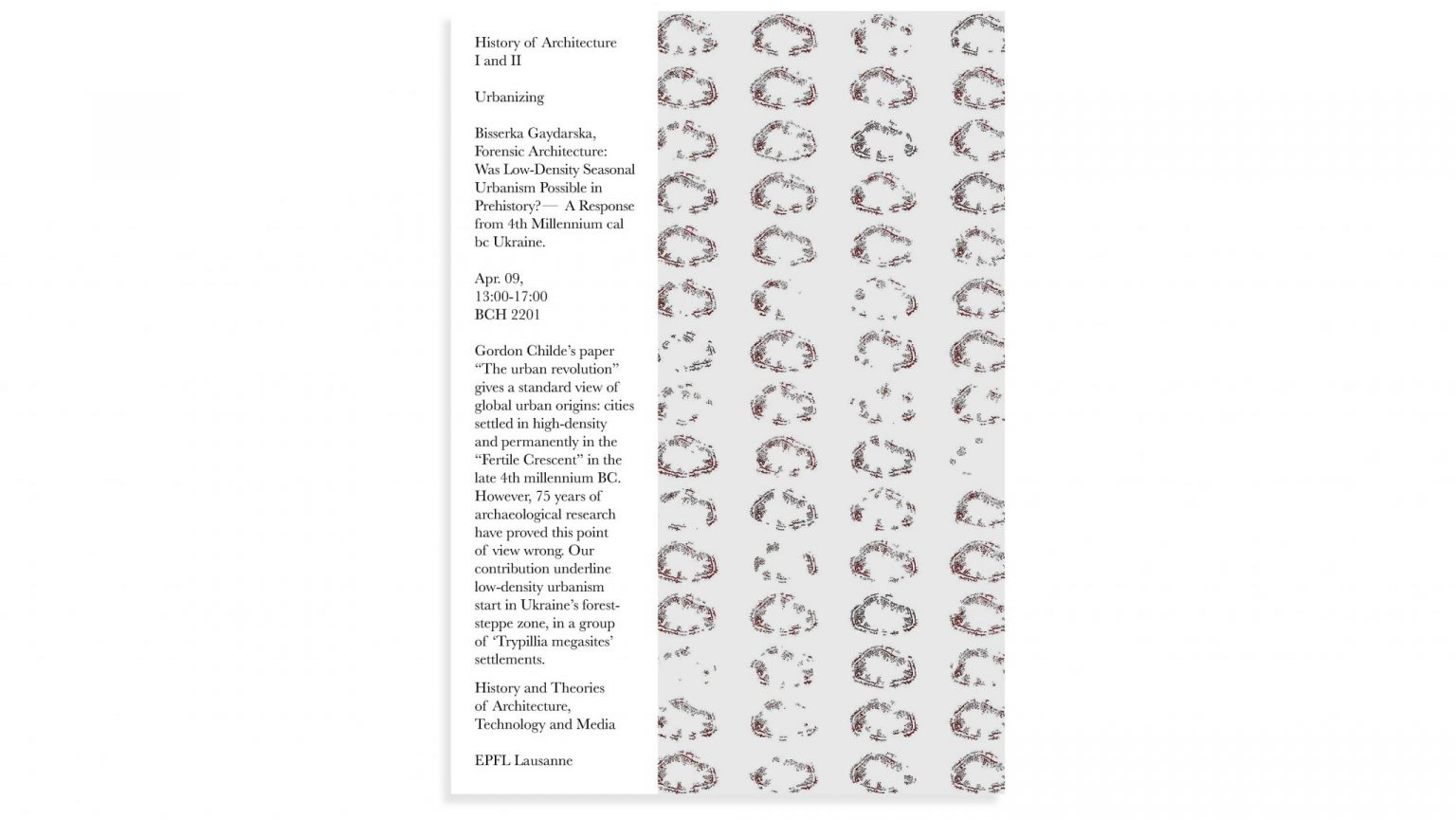Guest Lecture by Bisserka Gaydarska and Davide Piscitelli (Forensic Architecture)

8. Data modelization of the urban organization of Nebelivka, 4th millennium cal bc Ukraine. Source: Forensic Architecture and David Wengrow, The Nebelivka Hypothesis. Venice Biennale – 18th International Architecture Exhibition. 2023.
Was Low-Density Seasonal Urbanism Possible in Prehistory? – A Response from 4th Millennium cal bc Ukraine
The standard view of global urban origins dates from Gordon Childe’s classic paper on “The urban revolution” in the Town Planning Review (1950): cities began as typically high-density, permanent, long-lasting settlements in the late 4th millennium cal BC in the “Fertile Crescent” and made a substantial contribution to early 3rd millennium cal BC state formation in that region. However, 75 years of advances in archaeological theory, methods and investigations in many countries combine to indicate that this view is no longer fit for purpose. In particular, advances in the study of low-density urbanism – not least Roland Fletcher’s work – show that there is a genuine alternative to high-density developments of the kind normally associated with Ur, Athens, Rome, Paris, London, Lausanne et al. Our contribution to this debate underlines that low-density urbanism – and therefore the first cities in the world – began in the early 4th millennium cal BC in the forest-steppe zone of Ukraine, in a group of preternaturally large settlements termed “Trypillia megasites”. In this talk, we consider the city as a human artifact and an object of design and challenge traditional ideas of what is a city and the hierarchizing effects of urbanization. Consequently, we focus on six questions about the megasites:
Question 1: how did Trypillia communities conceive of the possibility of scaling up their small sites to become urban sites of over 200ha?
Question 2: how does the temporality of occupation (permanent – seasonal) affect urban growth and, specifically, low-density urbanism?
Question 3: in the planning of megasites, how were the tensions resolved between top-down megasite-level planning and the bottom-up organisationof settlement by many different visiting or residential groups?
Question 4: how was the key urban aspect of heterogeneity materialised in both architectural planning and artefact distributions?
Question 5: how does the evidence presented for Nebelivka challenge the idea of a hierarchical social formation?
Question 6: what was the cultural heritage of megasites and how was it materialised in later settlement developments?